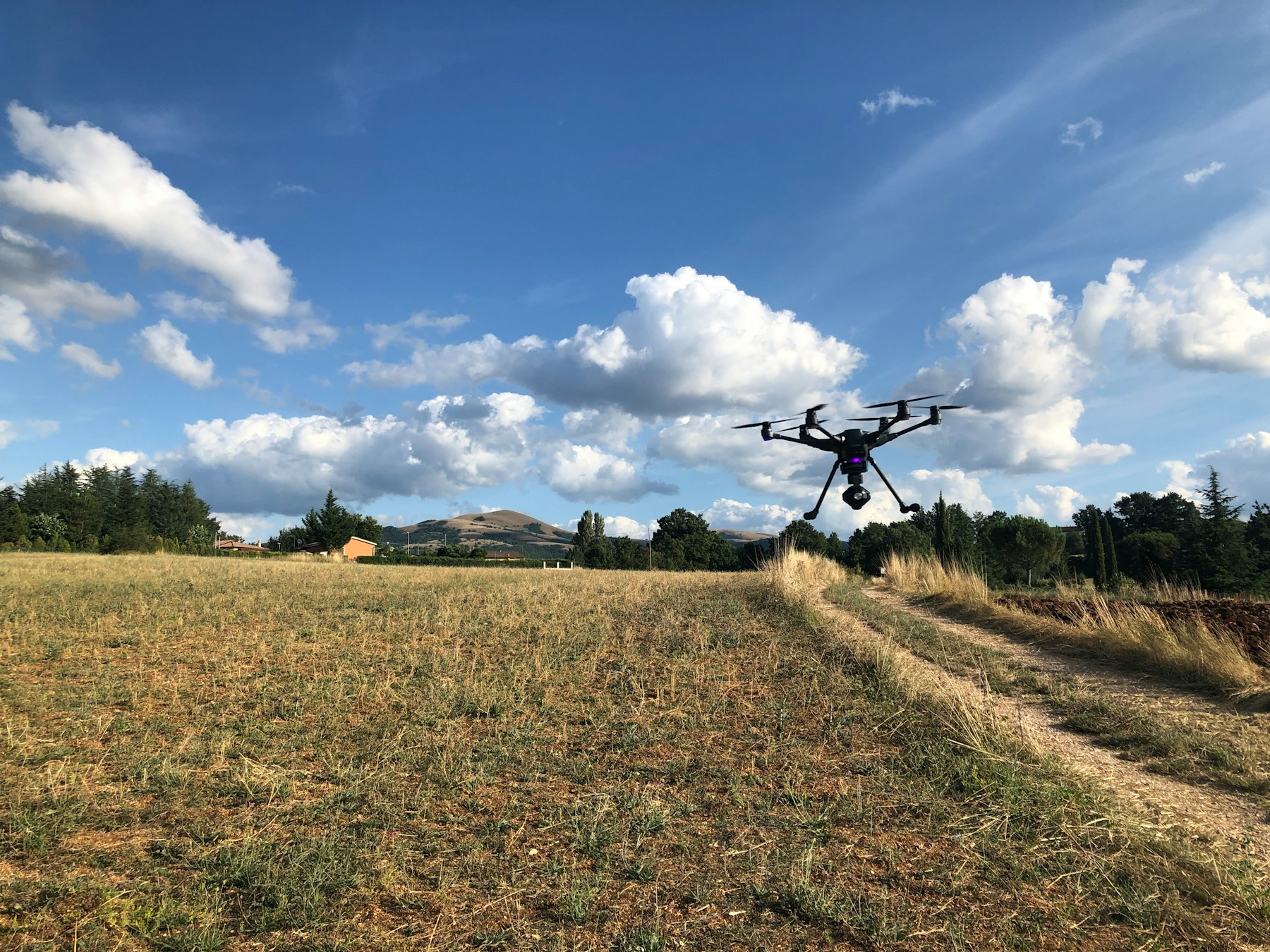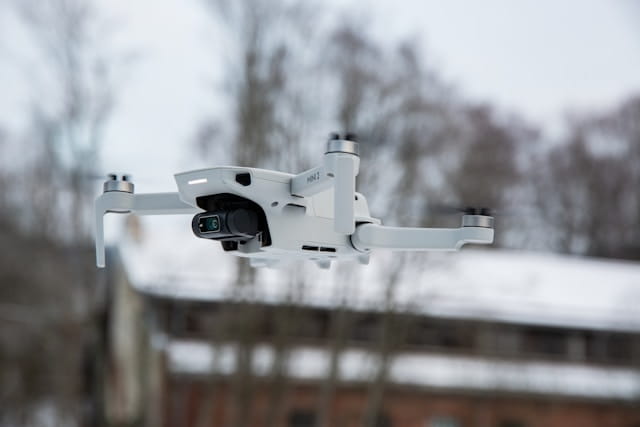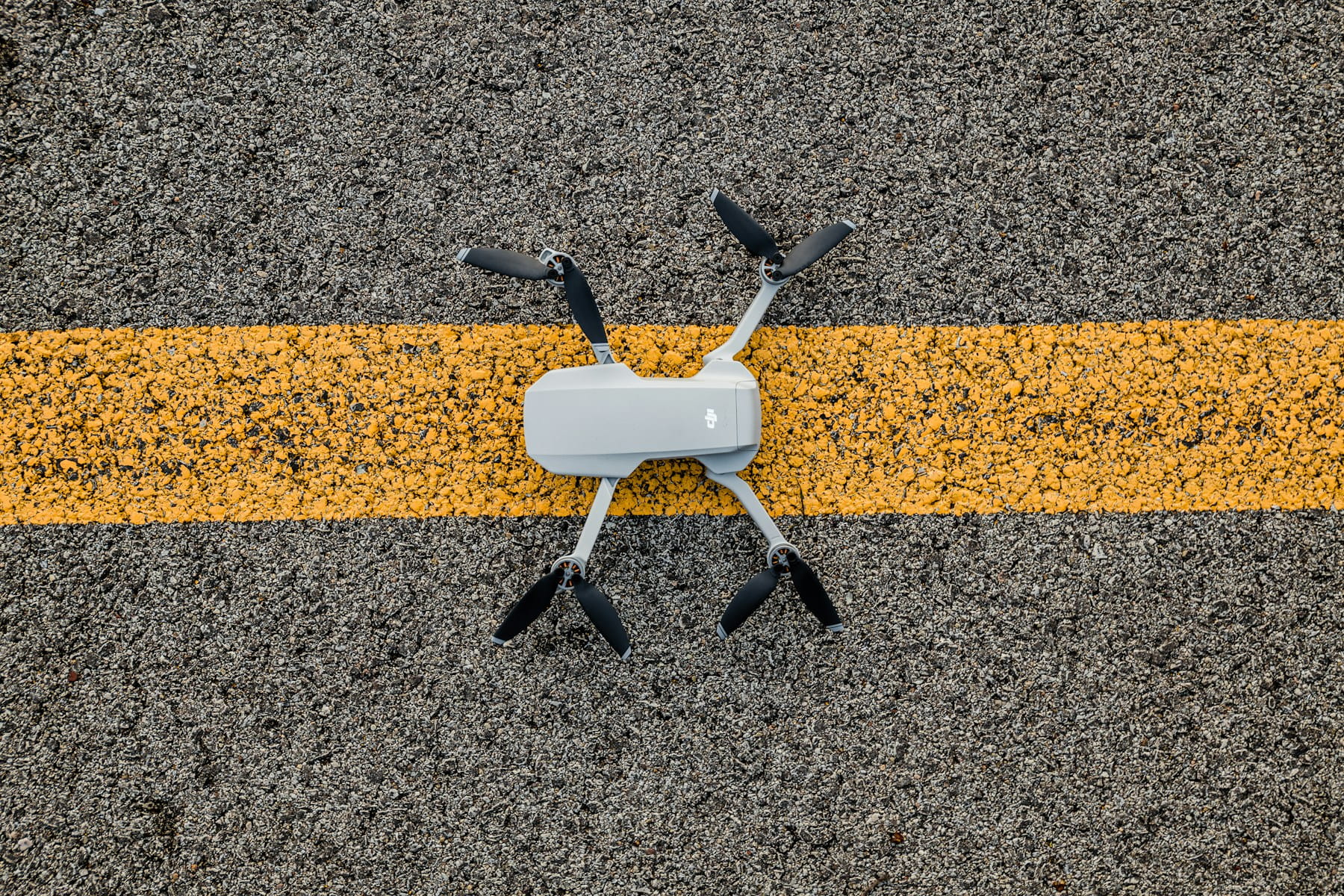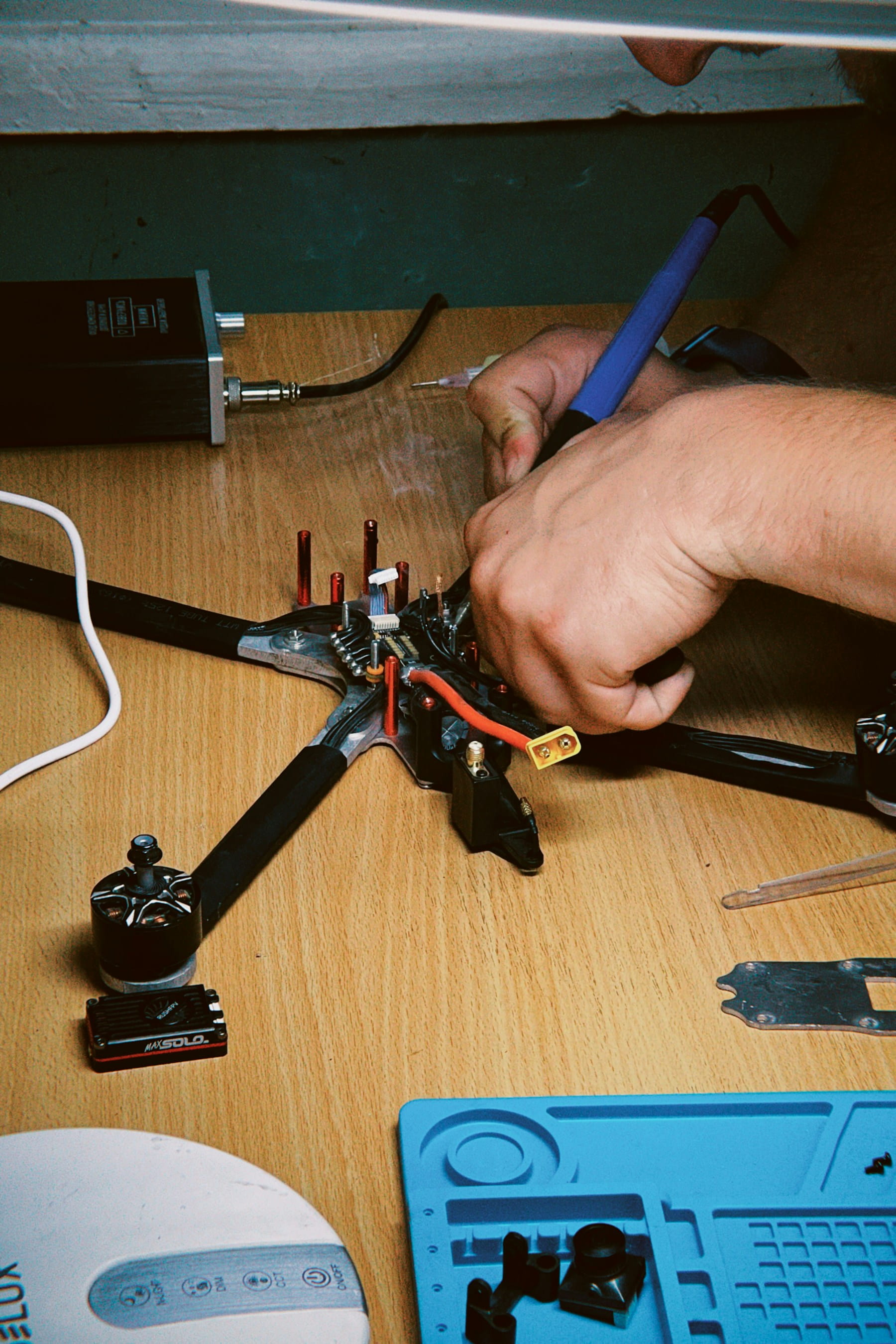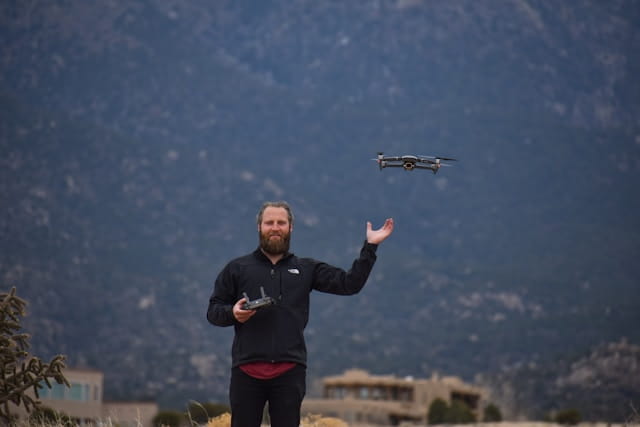Discover essential drone insurance coverage types, including hull, liability, payload, and ground risk protection, tailored for commercial operators to mitigate risks and ensure regulatory compliance in aerial operations.
The rise of commercial drone operations has fundamentally changed how businesses approach aerial work. From construction sites to agricultural monitoring, drones are everywhere. But with this technological leap comes a pressing question that keeps many operators up at night: what happens when something goes wrong?
Picture this: your $50,000 industrial drone experiences a GPS malfunction and crashes into a construction site, damaging equipment and potentially injuring workers. Without proper insurance coverage, this scenario could spell financial disaster for your operation. The drone industry has matured enough that "winging it" without proper protection simply isn't an option anymore.
The insurance landscape for unmanned aerial systems presents unique challenges that traditional aviation coverage wasn't designed to handle. Commercial drone operations face risks ranging from equipment damage to liability claims, and understanding these coverage needs has become as critical as mastering flight planning itself.
Table of contents
- Types of drone insurance coverage
- Hull coverage for equipment protection
- Liability insurance requirements
- Payload and data coverage
- Ground risk hull coverage
- Professional liability considerations
- Factors affecting insurance costs
- Industry-specific coverage needs
- Regulatory requirements and compliance
- Claims process and documentation
- Choosing the right insurance provider
Types of drone insurance coverage
Commercial drone insurance isn't a one-size-fits-all product. The coverage landscape includes several distinct types, each addressing specific operational risks that drone operators face daily.
Physical damage coverage protects the aircraft itself. This includes the drone, gimbal, cameras, sensors, and other attached equipment. Think of it as comprehensive coverage for your car, but for flying machines that cost significantly more and face unique perils like bird strikes and electromagnetic interference.
Third-party liability coverage addresses damages your drone might cause to other people or property. This becomes particularly important when operating near populated areas or valuable infrastructure. A single incident could result in millions in damages if your aircraft interferes with airport operations or causes a multi-vehicle accident.
Personal injury liability covers claims related to invasion of privacy, defamation, or other personal injury claims that might arise from drone operations. Given the sensitive nature of aerial imaging and data collection, this coverage addresses modern privacy concerns that didn't exist in traditional aviation.
Product liability coverage protects against claims arising from defective services or products delivered using drone technology. If your aerial survey data contains errors that lead to construction problems, this coverage steps in.
Hull coverage for equipment protection
Hull insurance represents the foundation of drone coverage, protecting against physical loss or damage to the aircraft and its equipment. The aviation insurance industry adapted this traditional concept to address the unique risks faced by unmanned systems.
Ground risk hull coverage protects your drone while it's on the ground, in transit, or being prepared for flight. This includes theft, vandalism, fire, and weather damage. Many operators underestimate this exposure, but drones spend more time on the ground than in the air, making this coverage essential.
In-flight hull coverage addresses risks during actual operations. This includes collision with objects, loss of control, signal interference, and mechanical failures. The coverage typically includes the drone itself plus permanently attached equipment like gimbals and cameras.
Equipment coverage extends beyond the basic aircraft to include removable sensors, spare parts, ground control stations, and specialized payloads. High-end thermal cameras, LiDAR systems, and multispectral sensors can cost more than the drone itself, making this coverage critical for specialized operations.
The following table outlines typical hull coverage scenarios and their implications:
| Coverage Type | What's Protected | Common Exclusions | Typical Limits |
|---|---|---|---|
| Ground Risk Hull | Drone while not flying | Wear and tear, manufacturing defects | Up to aircraft value |
| In-Flight Hull | Drone during operations | Pilot error (sometimes), acts of war | Up to aircraft value |
| Equipment | Sensors, cameras, payloads | Software, consumables | Varies by item value |
| Spare Parts | Replacement components | Items in storage over 12 months | Usually 10-20% of hull value |
Liability insurance requirements
Liability coverage forms the most complex and potentially expensive component of drone insurance. The coverage addresses damages your operations might cause to third parties, but the requirements vary significantly based on operational scope and location.
Bodily injury liability covers medical expenses, lost wages, and pain and suffering for people injured by your drone operations. This includes both direct contact injuries and secondary injuries caused by your operations (like someone falling while trying to avoid your aircraft).
Property damage liability addresses physical damage to buildings, vehicles, infrastructure, and other property. Operating near airports, highways, or industrial facilities increases exposure significantly. A drone that damages power lines could face claims for both repair costs and business interruption losses for affected customers.
Aviation liability differs from general liability in several important ways. It typically provides broader coverage for aviation-specific risks and may include automatic coverage for newly acquired aircraft. Some policies also include coverage for hangarkeepers' liability if you store aircraft at third-party facilities.
Most commercial operations require minimum liability coverage between $1 million and $5 million per occurrence. However, specific contract requirements often drive coverage levels higher. Government contracts frequently require $10 million or more in liability coverage.
Payload and data coverage
Modern commercial drones carry sophisticated sensors and equipment that often exceed the value of the aircraft itself. Traditional hull coverage may not adequately address these specialized payloads and the valuable data they collect.
Sensor and camera coverage protects attached equipment like thermal cameras, multispectral sensors, LiDAR systems, and survey-grade GPS units. These items face unique risks including calibration loss, moisture damage, and electromagnetic interference that could render them useless even without physical damage.
Data and information coverage addresses the loss or corruption of collected data. If a storage device fails or data becomes corrupted during a critical survey mission, the cost to re-fly the mission and process new data can exceed the value of the equipment itself. This coverage typically includes both the direct costs of data recovery and the expense of re-collecting lost information.
Cyber liability considerations have become increasingly important as drones collect and transmit sensitive data. Coverage addresses data breaches, privacy violations, and cyber attacks that might compromise collected information or drone control systems.
Some operations require specialized coverage for particular payloads:
- Medical transport coverage for drones carrying blood samples, organs, or medications
- Hazmat coverage for drones used in environmental monitoring or cleanup operations
- Survey equipment coverage for precision GPS units and specialized mapping sensors
- Broadcasting equipment coverage for live-streaming and news gathering operations
Ground risk hull coverage
Ground operations present unique risks that many operators overlook. Drones spend most of their operational life on the ground, during transport, setup, calibration, and storage. Ground risk hull coverage addresses these often-underestimated exposures.
Transit coverage protects equipment while traveling to job sites. This includes coverage for vehicle accidents, theft from vehicles, and damage during loading and unloading. Given that many commercial drones travel in custom cases worth thousands of dollars, this coverage extends to protective equipment as well.
Storage coverage addresses risks while equipment sits in warehouses, offices, or temporary job site storage. This includes theft, fire, weather damage, and vandalism. Many policies require specific security measures like alarm systems or locked storage areas to maintain coverage.
Pre-flight and post-flight coverage protects during setup, calibration, and maintenance activities. Drones are particularly vulnerable during battery changes, sensor calibration, and firmware updates. Coverage typically includes accidental damage during these routine operations.
Hangar coverage applies when storing aircraft at airports or specialized drone facilities. This includes both physical damage to your equipment and liability for damage you might cause to the facility or other stored aircraft.
Ground risk coverage often includes business interruption provisions that compensate for lost income when covered damage prevents normal operations. This becomes particularly valuable for time-sensitive operations like emergency response or agricultural monitoring during critical growing periods.
Professional liability considerations
Professional liability coverage addresses errors and omissions in the services provided using drone technology. As commercial drone operations mature, clients increasingly expect professional-grade service levels and may pursue claims when deliverables don't meet expectations.
Survey and mapping errors represent a significant exposure for drone service providers. If aerial survey data contains inaccuracies that lead to construction problems, boundary disputes, or planning errors, the resulting claims can reach millions of dollars. Coverage typically addresses both the direct costs of correcting errors and consequential damages.
Inspection accuracy has become critical as industries rely on drone inspections for safety and maintenance decisions. If a drone inspection fails to identify structural problems or safety hazards, resulting incidents could generate substantial liability claims.
Data processing errors can occur during photogrammetry, orthomosaic creation, or 3D modeling processes. Clients may experience significant losses if processed data contains inaccuracies that affect project decisions.
Missed deadlines and project delays caused by weather, equipment failures, or other factors can generate claims for additional costs and lost profits. Some professional liability policies include coverage for these timing-related issues.
Professional liability coverage typically includes legal defense costs, which can accumulate quickly even for groundless claims. The coverage also addresses regulatory investigations and proceedings that might arise from professional activities.
Factors affecting insurance costs
Insurance premiums for commercial drone operations depend on numerous factors, some obvious and others less apparent. Understanding these cost drivers helps operators make informed decisions about coverage levels and risk management practices.
Aircraft value and complexity directly impacts hull coverage costs. A basic quadcopter with standard cameras costs far less to insure than a heavy-lift platform carrying specialized sensors. The replacement cost, availability of parts, and complexity of repairs all influence pricing.
Operational risk profile significantly affects both hull and liability premiums. Operations near airports, populated areas, or critical infrastructure face higher rates than rural agricultural flights. Night operations, extended visual line of sight flights, and complex missions also increase costs.
Pilot experience and training influence rates substantially. Professional pilot training programs demonstrate competency and often qualify for reduced insurance rates. Operators with commercial pilot certificates, extensive flight hours, and formal drone training typically receive better rates than newly certified pilots. Some insurers offer discounts for specific training programs or safety certifications.
Safety management systems can reduce premiums through demonstrated risk mitigation. Comprehensive risk assessment procedures and systematic maintenance protocols demonstrate operational maturity. Operators with documented maintenance programs, standardized operating procedures, and safety management systems often qualify for reduced rates.
The following factors commonly affect insurance pricing:
- Fleet size and composition - Larger fleets may qualify for volume discounts but also represent increased exposure
- Geographic territory - Operations in congested airspace or high-value areas increase costs
- Claims history - Previous losses directly impact future premiums
- Financial strength - Larger, established operators typically receive better rates
- Contract requirements - High liability limits for specific contracts increase costs
- Seasonal operations - Year-round operations may receive better rates than seasonal businesses
Industry-specific coverage needs
Different industries present unique insurance challenges that require specialized coverage approaches. Understanding industry-specific risks helps operators select appropriate coverage levels and types.
Construction and infrastructure operations face significant third-party liability exposure due to populated job sites and valuable equipment. These operations typically require high liability limits and may need coverage for business interruption if drone activities delay project completion.
Agricultural operations deal with large coverage areas and seasonal time pressures. Crop monitoring and spraying operations need coverage that addresses weather delays, equipment contamination, and potential crop damage from improper applications.
Energy sector work includes power line inspections, oil and gas facility monitoring, and renewable energy assessments. These operations face unique risks from electromagnetic interference, hazardous materials exposure, and critical infrastructure protection requirements.
Emergency services and public safety applications require rapid response capabilities and operation in hazardous conditions. Coverage must address operation during natural disasters, search and rescue activities, and law enforcement support.
Media and entertainment operations face privacy liability concerns and equipment damage from challenging shooting conditions. Coverage needs include protection for expensive camera equipment and potential invasion of privacy claims.
Transportation and logistics applications, including package delivery and infrastructure inspection, require coverage for cargo liability and operation over populated areas.
Each industry also faces specific regulatory requirements that may mandate minimum insurance levels or particular coverage types. Understanding these requirements helps ensure compliance and adequate protection.
Regulatory requirements and compliance
Commercial drone operations must navigate complex regulatory requirements that directly impact insurance needs. The Federal Aviation Administration (FAA) and other authorities establish minimum insurance requirements for certain operations, while contract requirements often exceed regulatory minimums.
Part 107 operations don't mandate insurance coverage for most commercial activities, but certificate holders remain liable for damages caused by their operations. Understanding comprehensive compliance requirements ensures all regulatory obligations are met. Many clients and property owners require proof of insurance before allowing drone activities on their premises.
Waiver operations that exceed standard Part 107 limitations may require specific insurance coverage as a condition of approval. Night operations, flights over people, and extended visual line of sight operations often mandate minimum liability coverage levels.
International operations face additional complexity as insurance requirements vary by country. European Union regulations, Transport Canada requirements, and other international standards may mandate specific coverage types or minimum limits.
Airport operations typically require substantial liability coverage and may mandate specific policy language addressing aviation risks. Many airports require minimum coverage of $5 million or more for drone operations on airport property.
State and local regulations add another layer of complexity. Some jurisdictions require business licenses, bonds, or insurance certificates for commercial drone operations. Local authorities may also mandate specific coverage for operations over public property or during special events.
Claims process and documentation
Understanding the claims process and maintaining proper documentation can significantly impact claim outcomes and settlement speed. Drone insurance claims often involve unique circumstances that require specialized handling and documentation.
Immediate response procedures should include securing the crash site, documenting conditions, and notifying the insurance carrier promptly. Many policies require notification within 24-48 hours of an incident, and delayed reporting can affect coverage.
Flight data preservation has become critical for claim investigation. Flight logs, telemetry data, and video recordings provide valuable evidence for determining cause of loss and validating coverage. Operators should preserve all electronic data immediately following an incident.
Photographic documentation should include the aircraft, crash site, weather conditions, and any damaged property. Multiple angles and close-up details help adjusters understand the scope of damage and circumstances of the loss.
Witness statements can provide valuable third-party perspective on incident circumstances. Contact information for witnesses should be collected immediately, as memories fade and people become unavailable over time.
The claims investigation process typically includes:
- Initial notification - Prompt reporting to the insurance carrier
- Adjuster assignment - Specialized aviation adjusters handle complex claims
- Investigation - Review of flight data, weather conditions, and maintenance records
- Damage assessment - Professional evaluation of aircraft and equipment damage
- Coverage determination - Analysis of policy terms and conditions
- Settlement negotiation - Discussion of repair costs or total loss values
Proper maintenance records, pilot training documentation, and operational procedures can significantly impact claim outcomes. Well-documented operations typically experience faster claim resolution and more favorable settlements.
Choosing the right insurance provider
Selecting an appropriate insurance provider requires careful evaluation of coverage options, financial strength, and industry expertise. The drone insurance market includes traditional aviation insurers, general liability carriers, and specialized drone insurance companies.
Aviation insurance specialists typically offer the most comprehensive coverage and understanding of drone risks. These carriers have experience with aviation claims and understand the unique aspects of unmanned aircraft operations. They often provide better coverage terms and more flexible policy structures.
General liability carriers may offer drone coverage as an endorsement to existing business policies. While potentially cost-effective, these policies may have significant coverage gaps or exclusions that leave operators exposed to aviation-specific risks.
Specialized drone insurers focus exclusively on unmanned aircraft coverage. These companies often provide innovative coverage options and may offer better rates for certain types of operations. However, their financial strength and claims-paying ability should be carefully evaluated.
Financial strength ratings from agencies like A.M. Best, Standard & Poor's, and Moody's indicate an insurer's ability to pay claims. Ratings of A- or better generally indicate strong financial stability, while lower ratings may suggest potential payment difficulties.
Claims service reputation can be as important as coverage terms. Research the carrier's reputation for prompt claim payment, fair settlement practices, and technical expertise in handling drone-related losses.
Policy flexibility matters for growing operations. Look for carriers that can accommodate fleet growth, operational changes, and evolving coverage needs without requiring complete policy rewrites.
Key questions to ask potential insurers include:
- What experience do you have with drone insurance claims?
- How do you handle coverage for new drone models or technologies?
- What risk management services do you provide to policyholders?
- How quickly can you bind coverage for new operations or equipment?
- What are your typical claim settlement timeframes?
The drone insurance market continues evolving as the industry matures and claim experience develops. Operators should regularly review their coverage needs and market options to ensure adequate protection at competitive rates.
Implementation Considerations
Drone insurance programs require careful planning that addresses operational risks, coverage gaps, and regulatory requirements. Organizations implementing comprehensive insurance strategies benefit from understanding industry-specific exposures, claims processes, and risk mitigation opportunities before selecting coverage.
Successful programs often start with thorough risk assessment and systematic compliance management that demonstrates operational maturity to insurance providers.
In Summary
Managing drone insurance effectively requires understanding the unique risks facing commercial operations and selecting appropriate coverage to address those exposures. From hull coverage protecting expensive equipment to liability coverage addressing third-party claims, comprehensive insurance planning has become essential for sustainable drone operations.
The complexity of drone insurance demands careful attention to coverage details, regulatory requirements, and operational risks. As the industry continues maturing, proper insurance planning provides the foundation for business growth while protecting against operational exposures.
Organizations implementing comprehensive insurance strategies today are positioning themselves for sustainable growth in an increasingly regulated environment. The integration of risk management practices with professional operational protocols creates the foundation for long-term success in commercial drone operations.
Ready to Enhance Your Risk Management Strategy?
Join commercial operators who have strengthened their insurance positioning through comprehensive risk management systems and operational excellence. Whether you're conducting specialized inspections, large-scale mapping projects, or industrial applications, strong operational foundations enable better insurance terms and coverage options.
Start your free trial today — no credit card required. Or book a demo to see how DroneBundle integrates risk management with compliance tracking, maintenance protocols, and pilot training records in a platform designed specifically for professional commercial operations.
